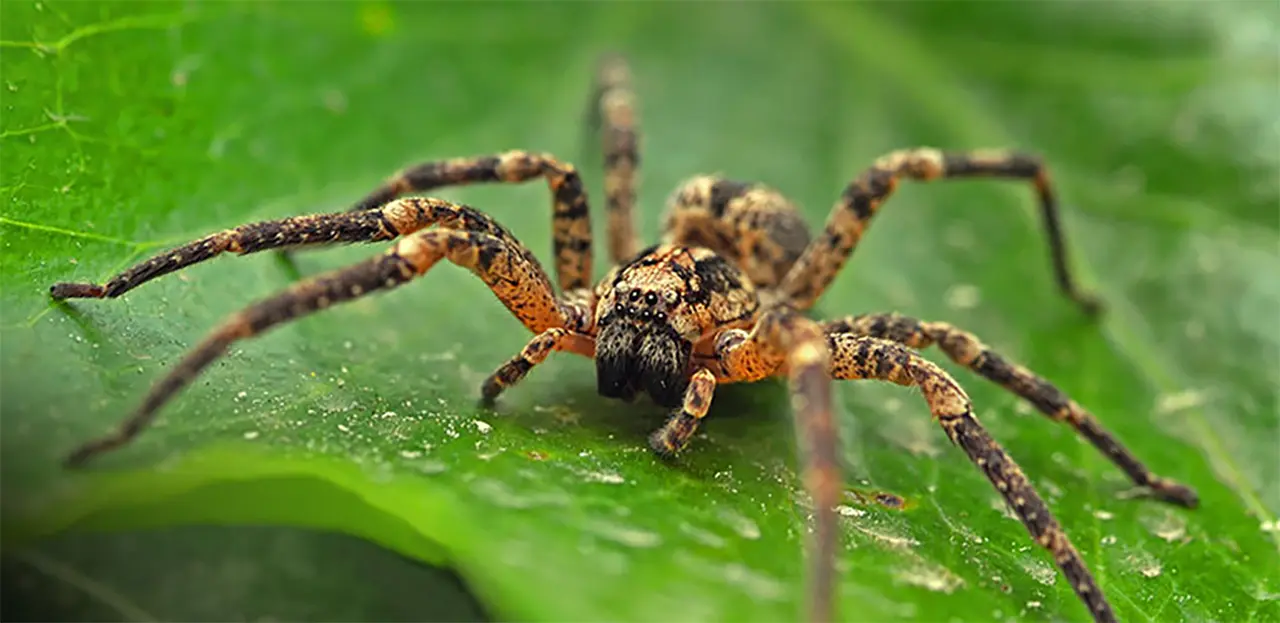Types of Spiders: 50,000+ species strong and growing!
Admittedly, the mere sight of these arachnids (meaning they have 8 legs, unlike insects which have 6 legs) stirs feelings of fear amongst even the bravest of us. And while few species pose any danger to people, the idea of a spider infestation in and around your home is something we’d much rather avoid.
Powered by the SC Johnson Center for Insect Science®
How to identify spiders
Spiders come in all shapes, sizes, and colors. But here are a few common characteristics to help you distinguish spiders from other insects:
- All spiders have eight legs and six to eight eyes.
- Spiders have two body regions: the cephalothorax and the abdomen.
- Male spiders are normally smaller and have different color markings than females.
Where’s the web?
Not all spiders build webs—and not all webs are very elaborate. Spiders that make intricate webs to catch their prey are called "passive hunters." The spiders that don’t make elaborate webs are called "active hunters," because they actively seek out their prey as they move around.
Common spider species
While the number of spider species is staggering, we’ve zeroed in on a handful that are common across North America below:
Wolf spiders

Large and hairy with incredible eyesight, wolf spiders are agile hunters that who rely on speed vs. webs to catch their prey. They’re usually found on the ground or in burrows underground – and even though they are venomous, the bite symptoms humans experience are usually mild.
Jumping spiders

These short, stout spiders normally move relatively slow but are known for being able to jump with extreme agility, especially while hunting. Some jumping spiders can jump 10 to 50 times the length of their bodies.
Ground spiders

Ground spiders commonly make their homes under rocks, leaves, logs, and other objects on the ground. Normally red or gray-brown in color (although they can be solid or striped), ground spiders do not produce venom that can harm humans.
Sac spiders

Sac spiders often reside in gardens, piles of leaves or wood, and timber. The population increases significantly during the fall, leading to many indoor infestations.
Crab spiders

The front two pairs of a crab spider’s legs extend out to the side and are longer than the back two pairs. These legs are used primarily for hunting, since these spiders don’t make webs. Crab spiders are extremely patient hunters that are known to sometimes wait days or even weeks for their dinner.
Venomous spiders

Black Widow, Brown Widow, Brown Recluse
While most spiders’ venom is not harmful to humans, some spiders - like black and brown widows and the brown recluse - can inflict dangerous and painful bites. If any of these venomous spiders bite you or your family, seek immediate medical attention. And if you find these venomous eight-legged critters in your home, especially in large numbers, it is advised to contact a pest-control professional to help with removal.
Did you know?

The daddy longlegs is not a spider at all, but rather a different order of Arachnid called an “Opiliones.” Unlike spiders, daddy longlegs do not have two distinct body regions. In addition, they only have two eyes, while spiders typically have eight.
Fight the fear
Spiders prey on other pests like mosquitoes, flies, moths, and even other spiders—helping to keep these bugs from getting out of hand. So, if you can get past the fear of spiders, you should avoid killing them unless threatened. If one has snuck its way into your home and it’s not venomous, try catching it in a jar and releasing it back outside.
Find solutions for spiders
Explore our family of products designed to help you get tough in the fight against spiders and keep them from invading your home.
Sources:
Raid® solutions for spiders
Related

How to Help Get Rid of Spiders
It can be tricky to get rid of spiders because they often make their homes in secretive, undisturbed places. We’ve got you covered with expert tips to help you protect your family and keep spiders away.

6 Ways to Help Get Rid of Bugs
It’s not always possible to completely get rid of bugs indoors. But we’re here to help with a combination of the right products and expert tips to help you keep bugs away from your home and loved ones.

Chemical-free Ways to Help Keep Bugs Out of Your House and Yard
To help get rid of pests naturally, you have to think like a bug. How do they get in the house? What are they attracted to? Where do they hide and breed? Find the answers and solutions to these problems below.





